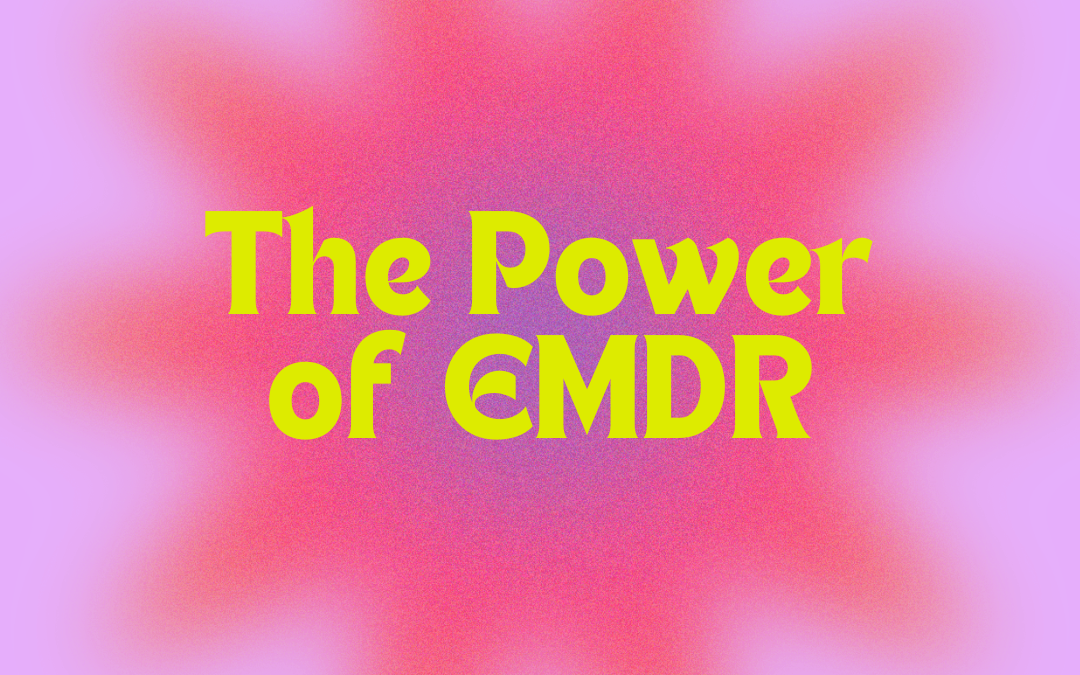Healing from trauma sometimes seems impossible, but with new developments in neuroscience over the last 15 years, it is more possible than ever. Join me on this episode all about one of my favorite therapy modalities, EMDR. EMDR stands for “Eye Movement Desensitization and Reprocessing” and it’s a revolutionary technique that can help you to finally feel relief from trauma. In this episode, I explain a bit about how it works and why it works, as well as share some stories about my experiences both administering EMDR and receiving EMDR. You will learn so much about how trauma is stored in the body, how to metabolize it, and how to move forward with more peace and freedom.
Here are three reasons why you should listen to this episode:
- Connect how trauma lives in the body and how to process it using both the mind and the body.
- Understand more about how EMDR works.
- Feel inspired that healing is possible.
Resources
- Listen to previous episodes of Returning Home:
- Episode 1 | Returning Home to Yourself From Childhood Trauma
- Slow Down To Speed Up: Visualization Masterclass
- Sign up for Elise’s Newsletter and receive a FREE PDF to start your self-compassion journey!
- Connect with Elise on Instagram: @elisekindya
Episode Highlights
[04:54] What is EMDR?
- EMDR stands for “Eye Movement Desensitization and Reprocessing”.
- This modality was adapted from a 1950s modality, systematic desensitization therapy that used progressive muscle relaxation, and instead uses bilateral stimulation with eye movements as well as other stimulation- sound tones and tactile stimulation of touching or tapping.
- Bringing both sides of the brain online to witness a traumatic memory.
[06:38] What is trauma?
- Trauma is a negatively activating experience where we are overwhelmed by a threat and we are unable to successfully defend ourselves.
- In humans, we tend to get stuck in our trauma psychologically when we aren’t able to close the traumatic stress response.
- See the book Why Zebras Don’t Get Ulcers by Robert Sapolsky to learn more about getting unstuck from stress.
- EMDR helps us get the trauma unstuck from our bodies.
- PTSD: Post traumatic stress disorder and CPTSD- Complex PTSD.
- Adverse Childhood Experiences Study.
[09:01] Trauma happens first in the body- even psychological trauma.
- The body disconnects the higher-level thinking brain when we experience trauma.
- We need the energy in our limbs to fight or run away from threat.
- Trauma gets stuck in our body at this point.
- Human make meaning of our experiences- and so when trauma gets stuck, we make it mean something about ourselves.
- EMDR guides clients to go back into the memory- usually the first and worst- and bringing the higher level/left side of the brain into the memory, usually gaining a new perspective on the memory.
[11:58] Bringing all of you into the memory
- The analytical part of the brain is seeing this memory for the first time.
- After trauma, you might over analyze and wonder what we could have done differently. As humans, we make it mean something about us – even when it wasn’t our fault.
- EMDR can stop these intrusive thoughts.
- When you can see this memory more logically and objectively it helps you realize that the traumatic event that happened was out of your control.
[15:24] Tools to use in EMDR
- Often times, you needed protection from the trauma or nurturing after the trauma so that the impact would not have been as great.
- I help clients develop Protective Figures and Nurturing Figures into sessions to reprocess the memory.
- I see this as powerful inner child work.
- You deserve care and love, and EMDR provides the opportunity for a rebirth.
[18:14] Talk therapy and EMDR
- We use the left side of the brain in talk therapy.
- The trauma is stored in the right side of the brain and in the body, which talk therapy doesn’t usually touch.
- EMDR brings both sides of the brain to see the memory and actually can do something with it.
- We can liberate and free ourselves when we do EMDR.
- Regain access to parts of yourself that felt inaccessible.
[20:16] There is no time machine
- No type of therapy can rewind time and change your life experiences.
- What we can do is to use tools today to help you feel better about yourself, and increase your self worth to help you live your life differently going forward.
[21:02] Things To Consider When Doing EMDR
- Important to do EMDR with other practices and with a trained therapist.
- Therapists can screen clients to make sure that they are appropriate for this type of work.
- People on TikTok are saying that they have given themselves EMDR- which I would not recommend.
- Sometimes slow is fast- working with a professional can help you get there the “right” way.
- Trauma makes us feel hyper independent and it’s actually healing to be in community when healing.
[25:48] Closing Thoughts
- Our brains have neuroplasticity and mirror neurons- which helps our brain change.
- When we are intentional and willing to practice, we can change.
- EMDR helps you maximize the potential of your brain.
Enjoyed this Episode?
If you enjoyed this podcast, please make sure to subscribe and share it!
Leave an episode review and share it! If you enjoyed tuning in to this episode, don’t forget to leave us a review. You can also share what you’ve learned today with your friends to help them embody their true, authentic selves. Anything is possible when you return home to yourself.
Have any questions or lightbulb moments? I’d love to hear from you! Feel free to hit me up on Instagram or send an email at elise@elisekindya.com.
Thank you so much for listening! For more episode updates, visit my website.


